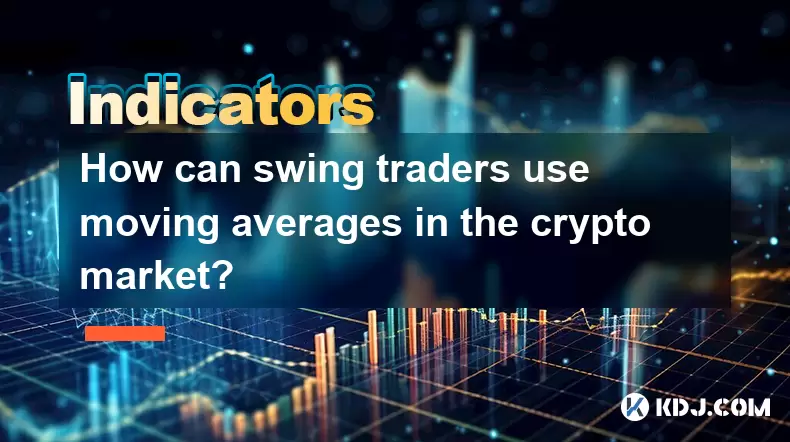-
 Bitcoin
Bitcoin $114800
-0.70% -
 Ethereum
Ethereum $4740
0.44% -
 XRP
XRP $3.018
-0.53% -
 Tether USDt
Tether USDt $0.9998
0.02% -
 BNB
BNB $863.0
-2.82% -
 Solana
Solana $205.2
1.19% -
 USDC
USDC $0.9999
0.00% -
 Dogecoin
Dogecoin $0.2303
-2.43% -
 TRON
TRON $0.3651
1.10% -
 Cardano
Cardano $0.8937
-2.19% -
 Chainlink
Chainlink $25.42
-0.96% -
 Hyperliquid
Hyperliquid $43.50
-0.67% -
 Sui
Sui $3.626
-2.57% -
 Stellar
Stellar $0.4055
-1.60% -
 Ethena USDe
Ethena USDe $1.000
0.01% -
 Bitcoin Cash
Bitcoin Cash $594.8
1.30% -
 Avalanche
Avalanche $25.04
-3.00% -
 Hedera
Hedera $0.2452
-1.68% -
 Litecoin
Litecoin $119.1
-1.96% -
 UNUS SED LEO
UNUS SED LEO $9.596
0.24% -
 Toncoin
Toncoin $3.331
-0.83% -
 Shiba Inu
Shiba Inu $0.00001277
-3.18% -
 Uniswap
Uniswap $10.94
-2.43% -
 Polkadot
Polkadot $4.044
-2.07% -
 Dai
Dai $0.0000
0.01% -
 Bitget Token
Bitget Token $4.670
-1.72% -
 Cronos
Cronos $0.1568
1.20% -
 Aave
Aave $346.1
-1.00% -
 Monero
Monero $269.5
0.15% -
 Ethena
Ethena $0.6950
-6.51%
How can swing traders use moving averages in the crypto market?
Moving averages like the 9 & 21 EMA help crypto swing traders identify trends, time entries via crossovers, and spot dynamic support/resistance in volatile markets.
Aug 12, 2025 at 03:00 pm

Understanding Moving Averages in Cryptocurrency Trading
Moving averages (MAs) are among the most widely used technical indicators in the crypto market, especially by swing traders who aim to capture price movements over several days to weeks. These indicators smooth out price data over a specified period, forming a single flowing line that helps identify the direction of the trend. The two primary types of moving averages used are the Simple Moving Average (SMA) and the Exponential Moving Average (EMA). The SMA calculates the average closing price over a set number of periods, treating each period equally. The EMA, on the other hand, gives more weight to recent prices, making it more responsive to new information. For swing traders, this responsiveness is often preferred due to the high volatility in cryptocurrencies.
Using Moving Averages to Identify Trends
One of the core functions of moving averages is to identify the prevailing trend in the crypto market. When the price of a cryptocurrency like Bitcoin or Ethereum is consistently trading above a key moving average—such as the 50-day or 200-day MA—it signals an uptrend. Conversely, if the price remains below these levels, it suggests a downtrend. Swing traders use this information to align their trades with the trend, increasing the probability of success. For instance, when the 50-day EMA is above the 200-day EMA, this formation is known as a "golden cross" and is considered a bullish signal. The opposite, a "death cross", occurs when the 50-day EMA crosses below the 200-day EMA, indicating bearish momentum. These crossovers help traders time their entries and exits effectively.
Setting Up Moving Average Crossovers for Entry Signals
Swing traders frequently rely on moving average crossovers to generate trade signals. This strategy involves using two moving averages: one short-term and one long-term. Common combinations include the 9-day and 21-day EMA or the 10-day and 50-day SMA. A buy signal is generated when the shorter-term MA crosses above the longer-term MA, indicating upward momentum. A sell signal appears when the shorter MA crosses below the longer one. To apply this in a crypto trading platform like TradingView or Binance, follow these steps:
- Open the chart of the desired cryptocurrency (e.g., BTC/USDT).
- Click on the "Indicators" button and search for "Moving Average".
- Add the first MA with a period of 9 and set it to EMA.
- Add a second MA with a period of 21, also as EMA.
- Observe the crossovers: when the 9 EMA moves above the 21 EMA, consider a long position.
- Use the reverse crossover to exit or initiate a short position.
This method works particularly well in range-bound or trending markets, but caution is needed during choppy or sideways price action, where false signals may occur.
Using Moving Averages as Dynamic Support and Resistance Levels
In addition to trend identification and crossovers, moving averages act as dynamic support and resistance zones. Unlike static horizontal levels, these evolve with price action, making them highly relevant in fast-moving crypto markets. For example, during an uptrend, the 21-day EMA often serves as a support level where price pulls back before resuming upward. Traders can use these pullbacks as entry opportunities, placing buy orders near the moving average with a stop-loss just below it. Similarly, in a downtrend, the same MA may act as resistance, offering a spot to enter short positions. To enhance reliability:
- Confirm that volume increases on bounces off the MA.
- Look for candlestick patterns like bullish engulfing or hammer at support.
- Combine with RSI or MACD to avoid entering during overbought or oversold extremes.
This approach is especially effective on the 4-hour and daily timeframes, which are popular among swing traders.
Filtering False Signals with Multiple Timeframe Analysis
Due to the high volatility of cryptocurrencies, moving averages can generate false signals, especially on lower timeframes like 15-minute or 1-hour charts. To reduce risk, swing traders use multiple timeframe analysis. This involves checking the alignment of moving averages across different timeframes to confirm trend strength. For example:
- Check the daily chart to determine the primary trend using the 50 and 200 EMA.
- Switch to the 4-hour chart to spot potential entry points based on shorter MAs.
- Ensure that the direction of the short-term MA on the 4-hour aligns with the long-term MA on the daily.
- Avoid taking trades on the 4-hour if the daily trend is strongly against it.
This layered approach increases the probability of successful trades by ensuring that entries are in harmony with the broader market direction.
Practical Tips for Implementing Moving Averages in Crypto Swing Trading
To maximize the effectiveness of moving averages, traders should customize settings based on the asset’s volatility and their holding period. For instance, altcoins with higher volatility may require shorter MA periods to stay responsive. It’s also important to avoid overloading charts with too many indicators, which can lead to confusion. Instead, combine moving averages with volume analysis and price action for confirmation. Backtesting strategies on historical data using platforms like TradingView’s bar replay feature can help refine MA parameters. Always use stop-loss orders to manage risk, especially in crypto markets where sudden reversals are common.
Frequently Asked Questions
Can moving averages be used for all cryptocurrencies?
Yes, moving averages can be applied to any cryptocurrency, including Bitcoin, Ethereum, and smaller altcoins. However, the effectiveness may vary based on liquidity and volatility. Highly volatile or low-volume coins may produce more false signals, so it’s advisable to use tighter stop-losses and confirm with volume or other indicators.
What is the best moving average period for swing trading crypto?
There is no universal "best" period, but common choices include the 9, 21, and 50 EMA for short-to-medium term swings. The 21-day EMA is widely used because it balances responsiveness and reliability. Traders often combine the 9 and 21 EMA for crossovers or use the 50 and 200 EMA for trend confirmation.
Should I use SMA or EMA for crypto swing trading?
The EMA is generally preferred in crypto trading due to its sensitivity to recent price changes. Cryptocurrency markets react quickly to news and sentiment, so the EMA’s weighting of recent data provides timelier signals compared to the SMA, which treats all periods equally.
How do I avoid whipsaws when using moving average crossovers?
Whipsaws—false signals during sideways markets—can be reduced by adding a filter. Use a longer-term trend filter (e.g., price above 200 EMA) or wait for candlestick confirmation after a crossover. Trading only in the direction of the higher timeframe trend also minimizes noise.
Disclaimer:info@kdj.com
The information provided is not trading advice. kdj.com does not assume any responsibility for any investments made based on the information provided in this article. Cryptocurrencies are highly volatile and it is highly recommended that you invest with caution after thorough research!
If you believe that the content used on this website infringes your copyright, please contact us immediately (info@kdj.com) and we will delete it promptly.
- Crypto Crossroads: Dogecoin, Stellar, and the Search for 2025's Top Coin
- 2025-08-24 19:25:32
- Bitcoin Price Swings, BTC News & Remittix: What's Hot Now?
- 2025-08-24 18:45:35
- Cryptos, Market Cap, 2025 Potential: Spotting the Next Big Thing
- 2025-08-24 16:45:35
- Shiba Inu vs. Layer Brett: Price Prediction and the Meme Coin Evolution
- 2025-08-24 17:05:29
- Dogecoin Price Prediction: Will DOGE Bark or Bite?
- 2025-08-24 17:45:26
- XRP Price: Analyst Prediction of $7-$8 in Few Weeks?
- 2025-08-24 17:45:26
Related knowledge

What does it mean when the +DI and -DI cross frequently in the DMI indicator but the ADX is flattening?
Aug 11,2025 at 03:15am
Understanding the DMI Indicator ComponentsThe Directional Movement Index (DMI) is a technical analysis tool composed of three lines: the +DI (Positive...

What does the sudden appearance of a "dark cloud cover" candlestick pattern during an uptrend indicate?
Aug 13,2025 at 11:35am
Understanding the 'Dark Cloud Cover' Candlestick PatternThe dark cloud cover is a bearish reversal pattern in technical analysis that typically appear...

What does it mean when the moving average, MACD, and RSI all send buy signals simultaneously?
Aug 11,2025 at 01:42pm
Understanding the Convergence of Technical IndicatorsWhen the moving average, MACD, and RSI all generate buy signals at the same time, traders interpr...

What does it mean when both the KDJ indicator and the RSI show overbought signals simultaneously?
Aug 13,2025 at 11:35am
Understanding the KDJ Indicator in Cryptocurrency TradingThe KDJ indicator is a momentum oscillator derived from the Stochastic Oscillator, widely use...

What does it mean when the price is trading above the SAR indicator but the red dots are densely packed?
Aug 09,2025 at 11:49pm
Understanding the SAR Indicator and Its Visual SignalsThe SAR (Parabolic Stop and Reverse) indicator is a technical analysis tool used primarily to de...

What does it mean when the candlestick chart forms a "Morning Star" but trading volume is sluggish?
Aug 12,2025 at 06:28pm
Understanding the Morning Star Candlestick PatternThe Morning Star is a three-candle bullish reversal pattern commonly observed in cryptocurrency pric...

What does it mean when the +DI and -DI cross frequently in the DMI indicator but the ADX is flattening?
Aug 11,2025 at 03:15am
Understanding the DMI Indicator ComponentsThe Directional Movement Index (DMI) is a technical analysis tool composed of three lines: the +DI (Positive...

What does the sudden appearance of a "dark cloud cover" candlestick pattern during an uptrend indicate?
Aug 13,2025 at 11:35am
Understanding the 'Dark Cloud Cover' Candlestick PatternThe dark cloud cover is a bearish reversal pattern in technical analysis that typically appear...

What does it mean when the moving average, MACD, and RSI all send buy signals simultaneously?
Aug 11,2025 at 01:42pm
Understanding the Convergence of Technical IndicatorsWhen the moving average, MACD, and RSI all generate buy signals at the same time, traders interpr...

What does it mean when both the KDJ indicator and the RSI show overbought signals simultaneously?
Aug 13,2025 at 11:35am
Understanding the KDJ Indicator in Cryptocurrency TradingThe KDJ indicator is a momentum oscillator derived from the Stochastic Oscillator, widely use...

What does it mean when the price is trading above the SAR indicator but the red dots are densely packed?
Aug 09,2025 at 11:49pm
Understanding the SAR Indicator and Its Visual SignalsThe SAR (Parabolic Stop and Reverse) indicator is a technical analysis tool used primarily to de...

What does it mean when the candlestick chart forms a "Morning Star" but trading volume is sluggish?
Aug 12,2025 at 06:28pm
Understanding the Morning Star Candlestick PatternThe Morning Star is a three-candle bullish reversal pattern commonly observed in cryptocurrency pric...
See all articles

























































































